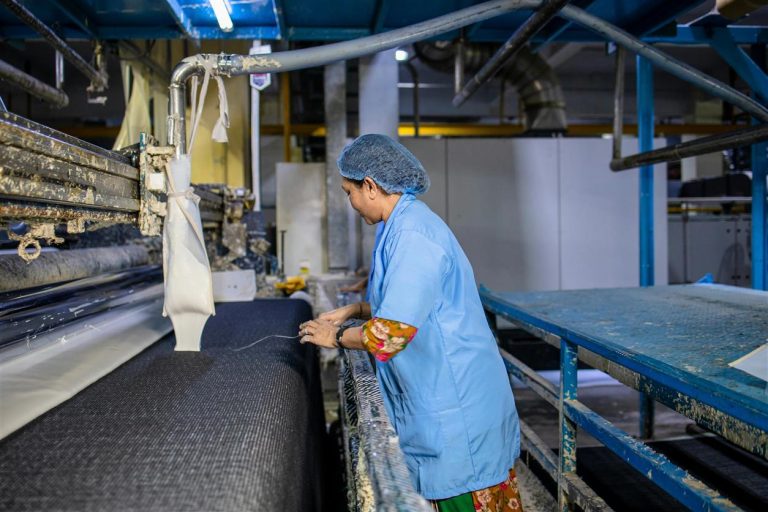
In recent years, the conversation around energy has shifted dramatically. Once centered on oil prices and geopolitical tensions, it now revolves around renewables, domestic resilience, and long-term stability. As countries rethink how they generate and consume power, one trend has emerged as a defining force: the growing commitment to green energy.
Wind farms, solar fields, hydroelectric stations, and battery storage projects are no longer fringe ideas. They are now central components of national energy strategies. But beyond the environmental benefits, there’s a question worth exploring in greater depth: What does the rise in green energy investment mean for national economies?
The answer is complex, but increasingly clear—it means transformation, not just in how energy is produced, but in jobs, trade, industrial development, and global influence.

Creating New Industries, Not Just Replacing Old Ones
One of the most immediate impacts of green energy investment is the emergence of entirely new sectors within national economies. Unlike fossil fuel industries—which tend to be capital-intensive and centralized—green energy projects often demand a wider range of local labor.
Building solar farms, erecting wind turbines, and laying down smart grids require electricians, engineers, construction crews, and logistics workers. These aren’t temporary surges. In many countries, these sectors are now creating jobs at a faster pace than traditional energy industries are losing them.
Take the example of the United States. According to the U.S. Bureau of Labor Statistics, the two fastest-growing occupations in the country are wind turbine service technician and solar photovoltaic installer. Similarly, in countries like India and Brazil, green energy development has provided rural employment in areas often left behind by industrial growth.
It’s not just about installation, either. Maintenance, grid management, component manufacturing, and research hubs are all part of the economic ripple effect. Over time, this can shift a nation’s economic balance—drawing investment to regions previously overlooked and diversifying income sources.
Attracting Investment and Reducing Energy Dependence
Governments that commit to long-term renewable energy goals tend to draw interest from international investors. These projects often bring stable returns over time, and with growing demand for cleaner energy globally, there’s a deepening pool of private capital looking to fund them.
Countries like Morocco, Chile, and Vietnam have used green energy development as a springboard to attract international partnerships. Foreign direct investment (FDI) flows in not only to fund energy projects, but also to support infrastructure upgrades, technology transfer, and job creation.
On the flip side, countries that embrace renewable energy can reduce their exposure to volatile global fuel markets. This has enormous economic benefits. For nations that import most of their oil or gas, switching to local energy sources can improve trade balances, reduce exposure to price shocks, and strengthen their currencies.
Consider Germany’s aggressive expansion of wind and solar in the 2000s. While costly upfront, it allowed the country to reduce reliance on Russian gas, a move that proved prescient in recent geopolitical conflicts. Likewise, countries like Denmark and Portugal now generate large portions of their electricity domestically, shielding them from external disruptions.

Challenges in Transitioning Economies
Not every outcome is positive or easy. In regions heavily dependent on coal or oil, the shift toward renewables has created economic uncertainty and social tension. Jobs in extractive industries often come with strong union protections, higher wages, and community identity. When these jobs disappear, they aren’t always replaced one-to-one by new roles in solar or wind.
This has led to calls for “just transition” policies—government programs aimed at retraining workers, supporting affected regions, and creating pathways for participation in the new energy economy. Without this support, the economic benefits of green energy risk being unevenly distributed, exacerbating regional inequalities.
In addition, the global supply chain for renewable energy components—particularly solar panels and lithium-ion batteries—remains highly concentrated. This creates vulnerabilities, especially for smaller nations that lack domestic manufacturing capabilities. To truly reap the economic rewards of green energy, many governments are now looking to localize parts of the supply chain.
Long-Term Economic Stability
One of the less-discussed benefits of green energy is its predictability. Once a solar farm or wind turbine is built, the marginal cost of generating electricity is close to zero. Unlike oil or natural gas, there are no fuel costs to hedge against, no global supply lines to monitor, and no extraction risks.
Over time, this predictability helps governments stabilize energy prices for households and businesses, making long-term planning easier. Industries benefit from consistent electricity rates, and households are less vulnerable to inflationary spikes driven by energy imports.
In countries where energy insecurity has traditionally held back industrial growth, green energy can act as a catalyst. Stable, locally generated power is not just good for the environment—it lays the foundation for stronger, more self-reliant economies.

Shifting Global Power Structures
There’s also a geopolitical angle to all of this. For much of the 20th century, power—both literal and political—was tied to oil. Countries rich in fossil fuels wielded considerable influence. That balance is beginning to shift.
Nations rich in sunlight, wind corridors, or access to hydroelectric potential are beginning to gain more strategic importance. Battery minerals—like lithium, cobalt, and rare earth elements—are becoming the new focus of global competition. While this introduces its own set of challenges, it also gives countries a chance to redefine their role on the world stage.
China, for example, has invested heavily not just in domestic renewable energy, but in controlling the supply chains around it. Meanwhile, Europe is racing to reduce dependence on Russian energy through clean alternatives. These shifts are not just environmental—they’re economic and political realignments.
Conclusion: A Long-Term Play with Broad Payoffs
Green energy investment is often framed in environmental terms, but its economic consequences are no less significant. From job creation and energy security to trade balances and geopolitical influence, the transition to cleaner energy sources is reshaping national economies in lasting ways.
The road isn’t without obstacles. The costs are real, and the transition can leave some behind if not managed carefully. But as more countries begin to see the economic benefits stack up—local employment, steady investment, reduced import bills—the case becomes stronger.
This isn’t a trend. It’s a redrawing of the global economic map—one that’s likely to define the next century.






